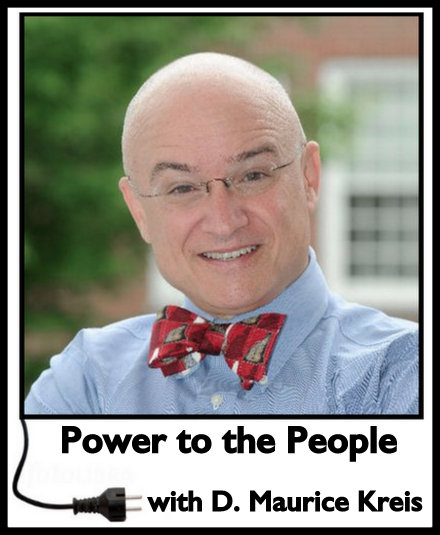
Two love letters arrived at the Office of the Consumer Advocate recently.
One was from Eversource. The other was from Liberty Utilities. And, as with many such missives, the real message was: Send money.
Technically, the letters were formal notices, required by the rules of the Public Utilities Commission (PUC), of an intent to seek rate increases. News that these two utilities will institute rate proceedings this spring was not a surprise, but it is still a big deal. Especially for Eversource – not just because it is by far the state’s biggest utility but because this will be the first request by Eversource for a general rate increase in a decade.
If you’re an Eversource customer, you’re probably wondering: If this is the first rate case in a decade, why has my electric bill been increasing over the past 10 years?
The answer, for good or ill, is that most of the charges on your electric bill are basically out of the PUC’s control. An Eversource residential customer who used 650 kilowatt-hours of electricity in February received a bill for $133.04, assuming the ratepayer relied on Eversource rather than an unregulated alternative supplier for the actual energy.
Ten percent of that bill paid for the bulk power transmission system – the big poles and wires that move electricity around the region at high voltage. Those rates are regulated federally. Nine percent were so-called “stranded cost” charges – basically, at this point, what ratepayers still owe for the misbegotten mercury scrubber at the coal-fired Merrimack Station (which Eversource sold last year at a loss) plus a few other similar charges related to the 22-year process of restructuring the electric industry.
Nearly half of that bill paid for energy – the actual electrons flowing through the wires. Eversource acquires its so-called “default energy service” in the wholesale marketplace, using a competitive procurement process. There is also the system benefits charge, a minuscule 3 percent of the bill, which pays for energy efficiency programs and assistance for low-income customers.
The delivery
Delivery service – the price of the poles, wires and meters that take electricity from the bulk power transmission system, step it down to a voltage that won’t kill you, measure it, and make it available to your electrical sockets – amounted to $39.61 of that $133.04 electric bill.
It is these delivery service charges that Eversource now wishes to increase. So does Liberty.
You might be wondering: Why should we let them run up their delivery service charges like that, at a time when the citizens and businesses of the Granite State are struggling? Blame the U.S. Constitution – specifically, the “Takings” Clause of the Fifth Amendment.
Under the Takings Clause, “private property” cannot be “taken for public use . . . without just compensation.” Certain realities are well-established thanks to a century or more of litigation: Private property includes the assets of investor-owned public utilities like Liberty and Eversource. Public use includes the service provided by such utilities.
Just compensation? In the context of utility rates, it means the owners of the utilities are entitled to rates that allow them an opportunity to earn a reasonable return on their investment. In legal terms, rates that are too low – i.e., rates that deny utility shareholders that opportunity – are said to be “confiscatory.”
Is there a corresponding constitutional principle that protects ratepayers? Can rates be so high that they are confiscatory from the perspective of customers?
Nope. The utilities can take your money, but it’s not a “taking” in constitutional terms. Fortunately, New Hampshire law fills in this gap with a statute requiring the PUC to make sure that rates are “just and reasonable.”
The meaning
Much ink has been spilled since this requirement was adopted in 1913 over what “just and reasonable” means. Generally, because utilities are monopolies, the PUC acts as a substitute for competition. The idea is to figure out what the rates would be if they were determined by market forces.
In a competitive marketplace, a producer won’t offer a good or service for sale unless the company can recover its operating expenses – the wages it must pay, the supplies it must purchase, the maintenance it must undertake, etc. On top of that, the company won’t sell unless it can make back whatever loan payments it is obliged to remit plus, on top of that, have some profit left over.
So, in a rate case, the PUC seeks to fill in all of these numbers. A big question is always the value of the utility’s “rate base” – the assets it uses to provide service to customers. A fateful legislative act in 1978 – deciding that “construction work in progress” could not be included in rate base – led inexorably a decade later to the bankruptcy of Public Service Company of New Hampshire thanks to a big hunk of construction work in progress known as Seabrook Station.
Why is rate base important? Because rate base, multiplied by the utility’s cost of capital, is the rate component that both pays back lenders and provides utility shareholders with a return on their investment. And the Constitution only requires shareholders to have the opportunity to earn such a return; it is not a guarantee. When your nuclear power plant suffers gigantic cost overruns and massive construction delays, the Takings Clause does not keep you out of Bankruptcy Court.
Every rate case features a metaphysical element: the quest to figure out what a reasonable return on shareholder investment is for the utility in question. These days the holy grail for utilities is to get that number above 10 percent. This always leaves me bewildered – or at least, wondering where I can deploy my own meager savings in a way that earns 10 percent a year on a more-or-less guaranteed basis (via an essential service that everyone purchases from a monopoly provider).
That’s only the first half of the story. All of that rate-case number crunching produces a single figure – the utility’s annual “revenue requirement.” Wondering how that revenue requirement gets divided up among the utility’s customers, and how the utility always manages to supplement that revenue requirement with additional charges? Stay tuned for the next edition of this column.

D. Maurice Kreis serves as the head of New Hampshire’s Office of the Consumer Advocate, representing the interests of residential customers before the NH Public Utilities Commission and elsewhere.







